When to plant potatoes – for a bumper crop
Enjoy homegrown produce from summer right through to winter with our guide on when to plant potatoes
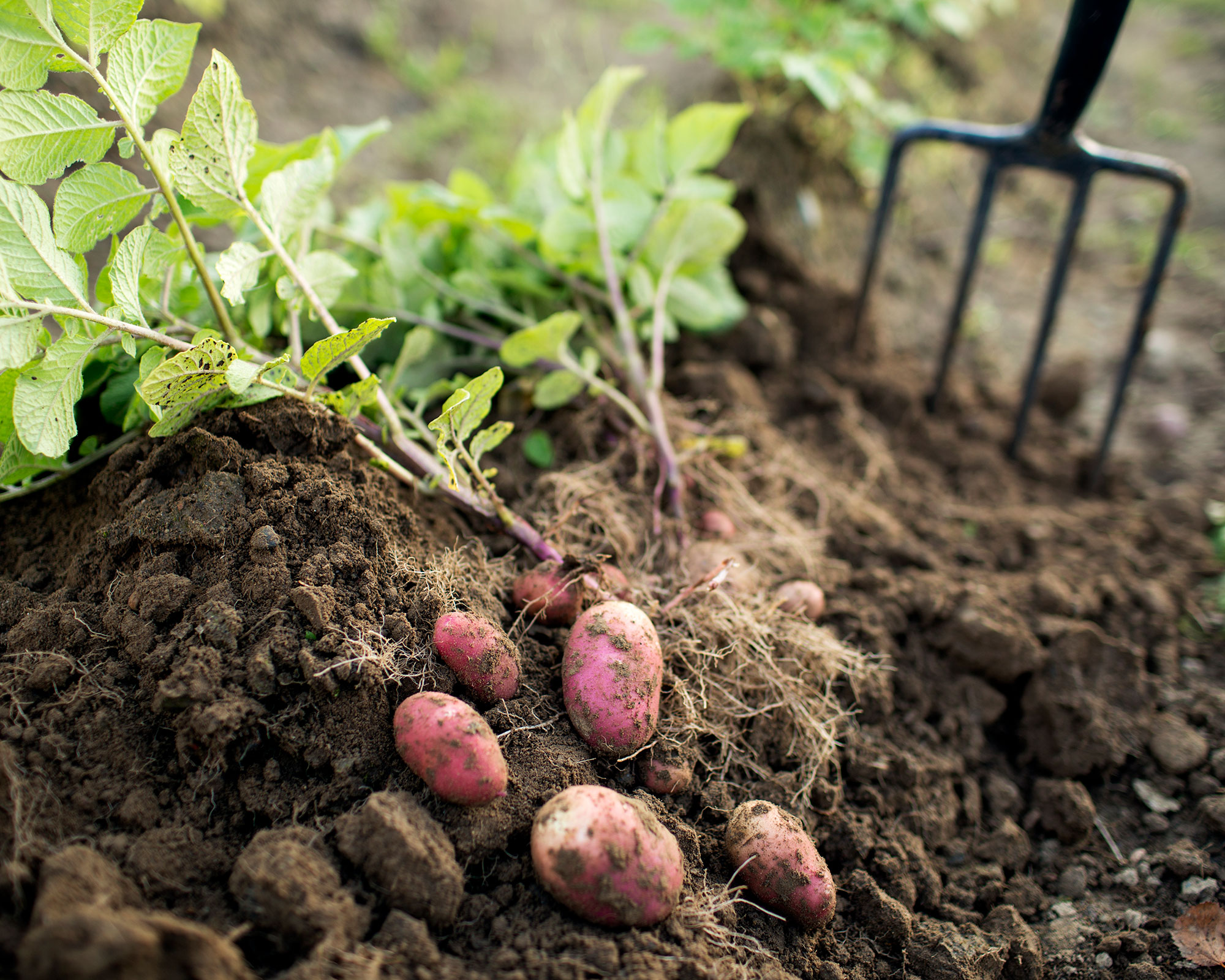

Knowing when to plant potatoes is important to ensure a good harvest. A cook's staple, potatoes can be grown in most soil types provided they have a sunny spot. Potatoes can also be grown in bags or in pots on a patio if you do not have an area of open ground. They’re also relatively easy to care for, which makes them a perfect vegetable for beginners to grow.
There's a huge variety of potatoes you can grow from fast-growing early varieties such as 'Swift' that provide small new potatoes in summer, to maincrops like the popular 'King Edward' that can be stored for the winter months. With some planning and successive planting you can be harvesting and enjoying potatoes from June right through to Christmas.
If you're learning how to grow potatoes knowing when to plant them is key, and this is the lowdown.
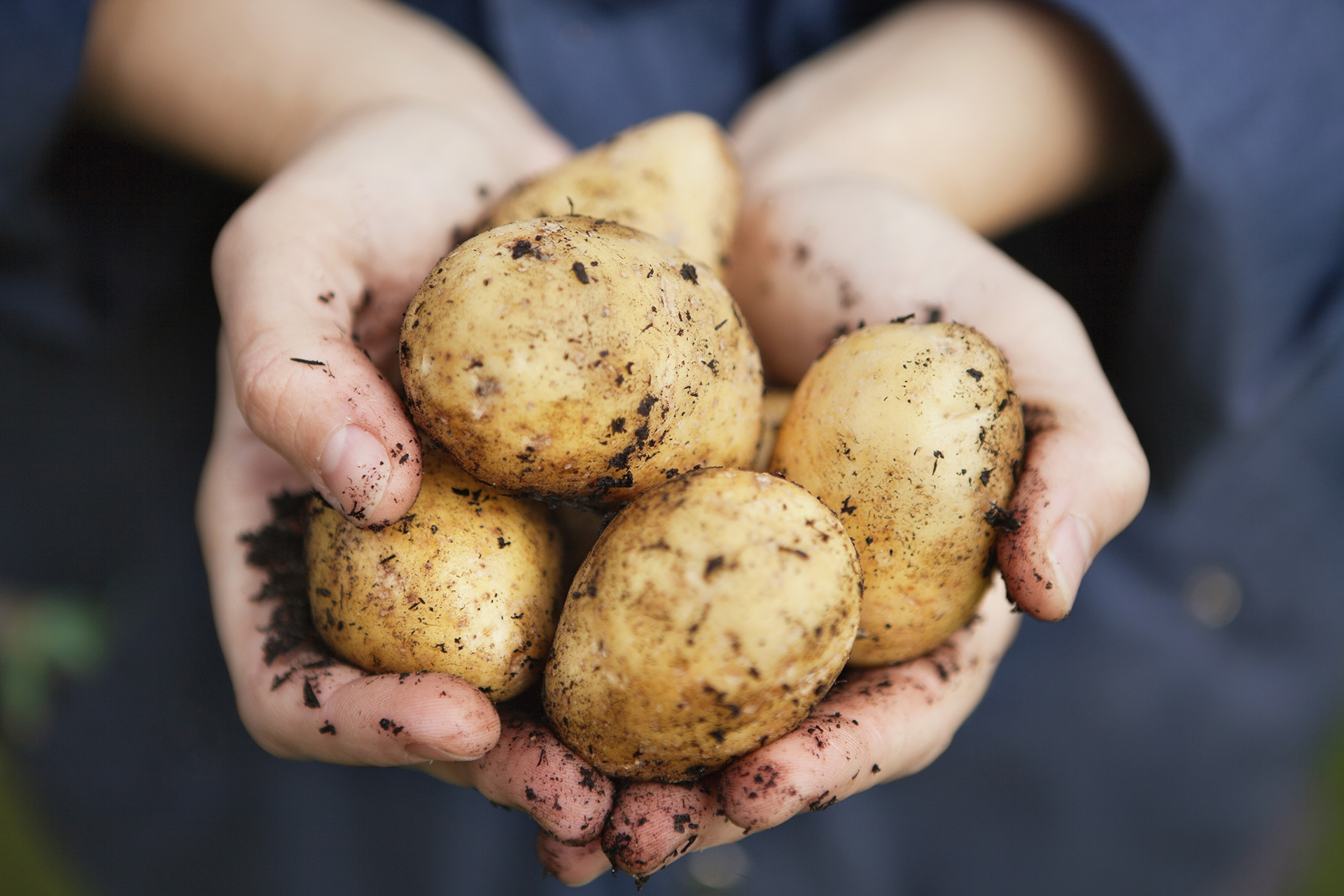
When to plant potatoes
As with knowing when to plant vegetables in general, when you plant potatoes will depend on your climate, soil conditions and the estimated date of the last frosts in your area. Potatoes are not hardy plants, so in general they are planted in spring from mid March to late April and can be harvested anywhere between June and October. In milder regions potatoes may be planted earlier than in colder regions.
'In general, potato plants are usually planted two to three weeks before the last frost date,’ says gardening expert Mary Jane Duford, known for her step-by-step guides. ‘The plants take about two to three weeks to sprout up above the soil, meaning that the timing works out so that potato plants sprout outdoors around the time of the local last frost date.'
Before planting potatoes you can give them a head start by 'chitting' them. This is a process which encourages seed potatoes to develop shoots before they are planted. To do this lay the seed potatoes in trays (you could use egg boxes) with their eyes pointing upwards and place the trays in a cool, light, frost-free place. In northern latitudes chitting is generally done six weeks before planting.
Potato seeds are ready to plant when the shoots are about three-quarters of an inch (2cm) long but they can be planted at any length, and they’re ideal as potato companion plants alongside flowers for beneficial effects.
Design expertise in your inbox – from inspiring decorating ideas and beautiful celebrity homes to practical gardening advice and shopping round-ups.
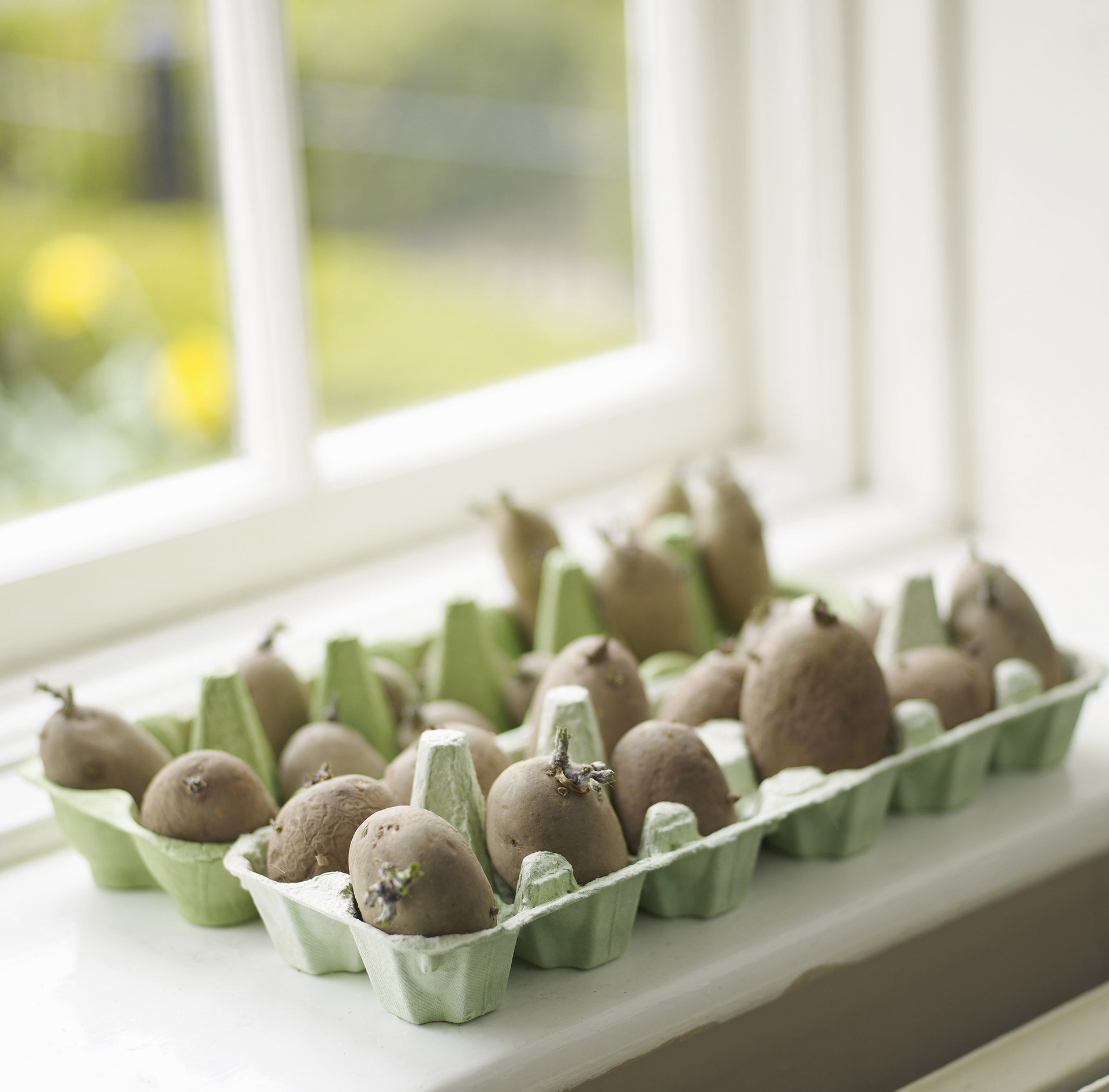
What is the best month to plant potatoes?
When you plant potatoes will depend on your climate and growing zone, but it will also depend on what type you are looking to grow.
Potatoes are split into three types depending on how long they take to mature: first early, second early and maincrops.
First early potatoes: plant in mid-to late March ready for harvesting in June or July
Second earlies: plant early to mid April for lifting in July or August
Maincrop varieties: plant in mid to late April and harvest in August for immediate use or lift in September/October for storing.
'Gardeners in the south usually plant potatoes in mid to late February. March to April are the most common planting months for potatoes in temperate regions. Gardeners in particularly cold climates may have to wait until May to plant potatoes,' explains Mary Jane Duford.

Tips on when to plant potatoes
While looking at calendars can be a useful guide for planning when to plant potatoes, it is important to pay attention to the weather, in particular the temperature of your soil. 'Early (or 'new') potatoes are best planted as soon as the ground is ready in March or April. “Ready” means workable and not cold to touch,' explains gardening expert Monty Don, author of The Complete Gardener.
To help you determine when the soil is ready consider buying a soil thermometer, suggest the gardening experts at glasshouse makers Hartley Botanic. 'Even potatoes have a temperature requirement of 43°F (6°C) at a 4 inch depth at least three days before planting,' they explain.
Early potatoes are likely to sprout above the surface of the soil before the frosts have passed; in this case they will need to be 'earthed up' to help protect the plants from frost damage. This is where soil is mounded up around the plants leaving all but the tips exposed. Earthing up also stops the growing tubers from turning green and encourages a larger crop.

How late can you plant potatoes?
If you’re wondering when to plant potatoes later on in the year, be aware that they are best planted in spring, but can be planted as late as mid-summer for a small crop of early or 'new' potatoes. Generally early potatoes will be ready to lift 10 to 13 weeks after planting while maincrop varieties mature in around 22 weeks. Potatoes planted in summer will not need chitting.
'While the overall production will be diminished, you could certainly plant potatoes as late as July for a small harvest of new potatoes in September-October,' says Mary Jane Duford.
Similarly, Monty Don, writing in The Complete Gardener, has said of his early potatoes that he has, 'planted as late as the second week in June and still got a decent crop’.
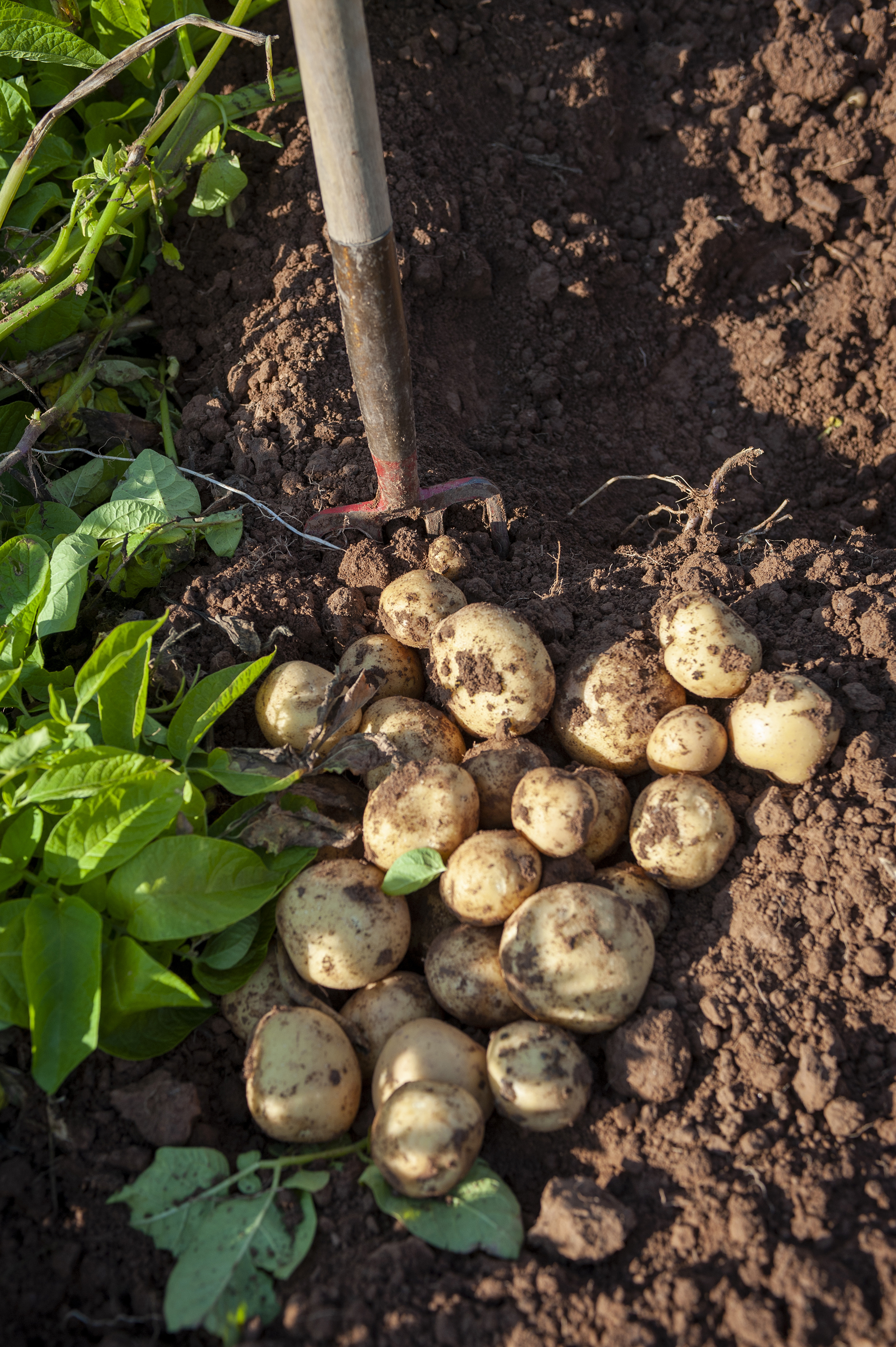
Can you grow potatoes all year round?
Potatoes can be grown outdoors all year round in warm climates such as in their native region of South America, but in northern latitudes with shorter growing seasons they are best planted in spring and harvested from June to October.
'Even in their native growing environment, potatoes follow an annual lifecycle of growth-harvest in which growth is aligned with the longest days of the year in terms of sunshine,' says Mary Jane Duford.
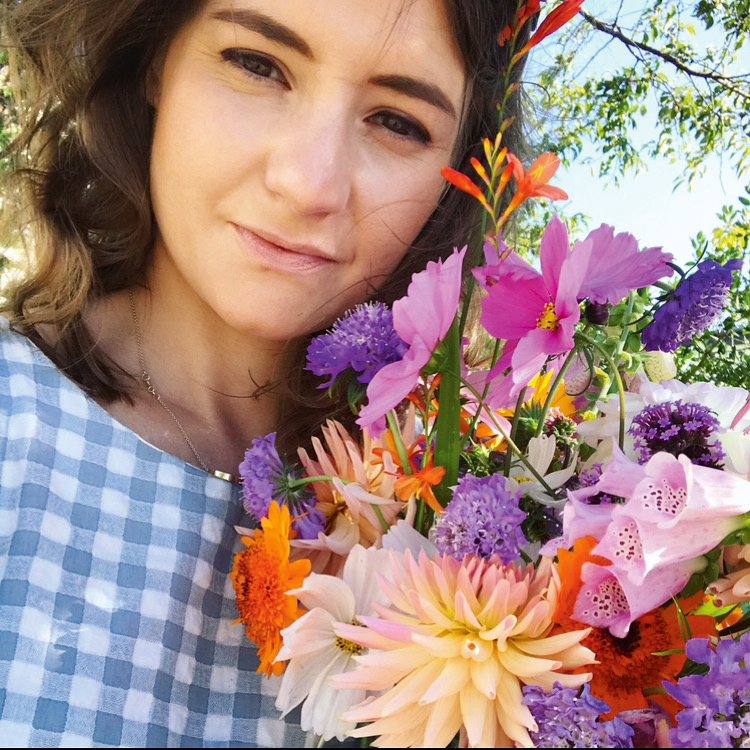
Pippa is a contributor to Homes & Gardens. A graduate of Art History and formerly Style Editor at Period Living, she is passionate about architecture, creating decorating content, interior styling and writing about craft and historic homes. She enjoys searching out beautiful images and the latest trends to share with the Homes & Gardens audience. A keen gardener, when she’s not writing, you’ll find her growing flowers on her yard for styling projects.